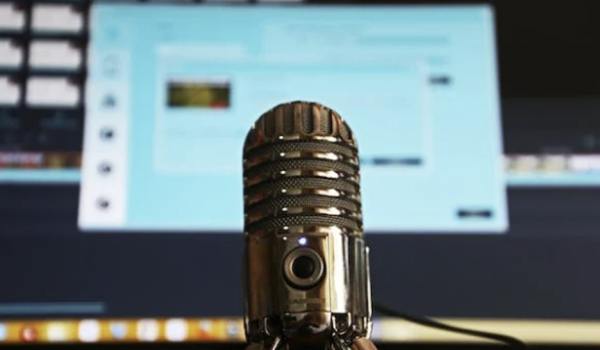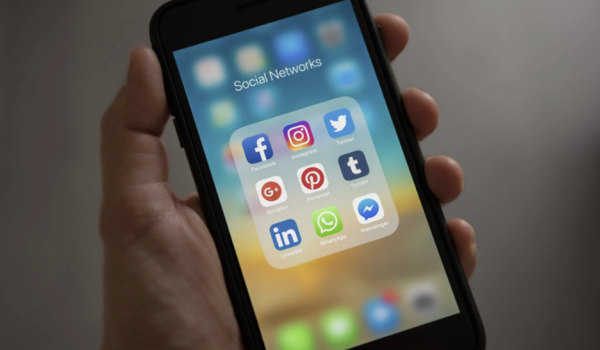Body language, as part of the non-verbal communication, plays a significant role when it comes to forming audience's impression about you as a speaker. There's a lot more to it.

According to Albert Mehrabian, a professor that dedicated his life to communication science and the psychology of verbal and non verbal messages – up to 55% of impression we leave is based on our body language, 7% are spoken words, and 38% is our diction (the way we speak). Some modern revisions of these percentages give a more important role to what exactly are we saying and a bit smaller role to body language, which makes the percent ratio more balanced. However, body language is important and it is scientifically proven.
Non-verbal abilities include posture, the way we are standing, the way we move, our facial expression, gesture, our gaze, but also our physical appearance. All of this has its complex role in forming an impression.
We will discuss the psychology of body language and the research Amy Cuddy did (see her Ted talk). But before that, let’s make an overview of some do’s and don’ts when it comes to body language and sending the right message to the audience.

Posture and standing
Do: Straighten up and leave your hands naturally at both side of your body. You should stand so that you have a firm basis and feel comfortable, like you are on solid ground. Your body balance should be evened out on both of your feet. If it’s not a strictly formal event, you can lean on one leg. The feet are supposed to be shoulder width apart or slightly more (or less), depending on how you feel most comfortable. This is the most natural posture with secure reliance and it shows confidence and is receptive to the audience eye.
Don’t: Shoulders should stand in their natural position, not bent (which shows insecurity and vulnerability) or excessively tight back (which looks unnatural). Don’t sway on your feet, that is the way nervousness reveals itself and it’s not attractive.
Movement
Do: It all depends on the space where you are delivering your speech, as well as on the number and shape of your audience. If you are supposed to talk behind a rostrum, then you can’t really move a lot. Otherwise, you should move moderately. It is preferable to synchronize the movement with what we are saying, because this harmonization can make your message more receptive. For example: If you are holding a motivational speech and you are calling on action, you could say something like: “Let’s make that step together, lets step out of our comfort zone and do great things” – which will be followed by you making an actual step forward. As for distance, you should keep a comfortable distance from the audience. It all depends on the space and on the occasion.
Don’t: If you are delivering a speech where your audience is really close to you, respect their private space and don’t get too close. Also, don’t move too much because it will distract the audience from your speech. If you are having problems with anxiety and stage fright and it manifests through excessive movement, start by identifying the problem and focus on not walking up and down like a lion in a cage. Also, it is very important not to turn your back towards your audience.
Gaze
Do: If you’re new at public speaking and haven’t yet gained confidence, it’s good to have a few familiar faces in the audience when you’re speaking in public. Arrange with them to nod their heads at your words and gently smile at you. It’s a psychological hack: it helps you to deliver your speech more successfully. You should locate your gaze somewhere in the hegiht of the persons eyes in the audience or a bit higher. Also, you can imagine six dots in the audience and visualize them: that way, you will look through the persons in audience and your gaze will follow the dots. Everyone in the audience should feel your attention, it is very important. Following those six dots, you will create a bond with the people and they will feel like you are talking to each and every one of them.
Don’t: Until you master the art of speaking, do not dwell too much on individual persons faces. First – it may confuse you, especially if you see some kind of reaction on their faces (which is inevitable). Second – if you do that in an unwieldy way or if you focus too long on a certain face, the person will probably feel uncomfortable. Generally, you are not meant to make one person listen to you and “bite” your idea, your goal is to win the audience.
Gesticulation
Do: Using your hands while speaking can be very effective. Hands should follow what you are saying and serve as an illustrative complement to your words. You should imagine a square, a frame that is in front of you and whose final borders are little more than the width of your shoulders. The frame should limit your movements and secure clear gestures. Of course, you can produce gestures that extend out of this box if you consider it is expedient. For example, when you say “On the one hand … on the other hand,” when showing both positive and negative aspects of some phenomenon, you can come out of the imaginary frame with one of your hands. You can see an interesting short video about effective gestures in public speaking.
Don’t: If anxiety and nervousness shows through the excessive use of hand gesture, you can use the trick of holding some object, a marker for example. The object will occupy your hands and nervousness will be less noticeable. However, avoid pens that have an on switch on their up side, as you will unconsciously start to click it and your little trick will not make much sense – because anxiety will actually be even more visible.
Face expression
Do: Smile and try to energize your facial mimics.
Don’t: Avoid making poker faces and dull expressions. Also, don’t grin because it’s repulsive. And weird.
Physical appearance
Do: Be tidy, follow dress codes if requested, take your time with details. If you are holding a speech in a small space and your audience is near, you could use a nice, subtle perfume. Wear what you feel comfortable in and what gives you a confidence boost.
Don’t: Don’t be unpresentable, unclean or untidy.
Now let’s take a look at the interesting research Amy Cuddy did regarding the psychology of body language. She presented an interesting theory about how we influence with our nonverbals, not just how we influence other people, but also ourselves, our thoughts and our feelings and our physiology.
There are numerous nonverbal expressions of power and dominance. As Amy Cuddy says, they are all about expanding, about making yourself bigger, stretching out, taking up space and opening up. When we feel victorious, we make these nonverbal expressions subconsciously. When we feel the opposite, we close up, make ourselves smaller. Our bodies instinctively put themselves in high or low power form.
Amy Cuddy raised an interesting question: we know that our minds change our bodies, but is it also true that our bodies change our minds? Her experiment shows that we can indeed manage to do that.
You can trick your body into thinking you feel good, dominate, confident and as a true winner. You can actually influence your chemical balance of testosterone and cortisol by taking a high power posture. This is also one of the techniques to cope with stage fright, it helps you calm yourself down before public performance as it works as a confidence boost. Amazing, isn’t it? So, fake it ’till you make it!
Support us!
All your donations will be used to pay the magazine’s journalists and to support the ongoing costs of maintaining the site.
Share this post
Interested in co-operating with us?
We are open to co-operation from writers and businesses alike. You can reach us on our email at [email protected]/[email protected] and we will get back to you as quick as we can.









